5 Key Features of Minimalist Garden Design
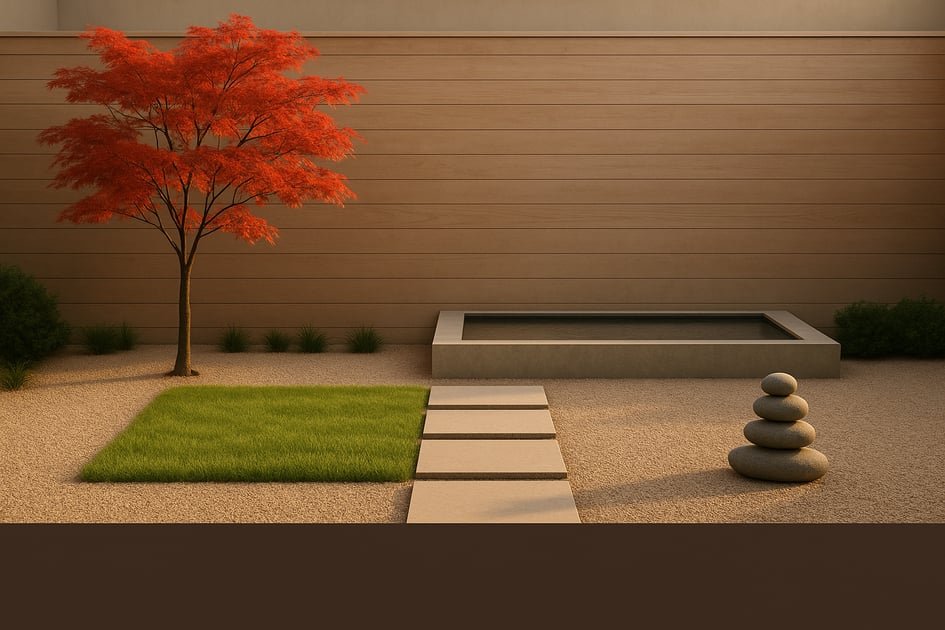
Minimalist garden design is about simplicity and balance. It focuses on clean lines, open spaces, and carefully chosen elements to create a serene outdoor space. Here’s a quick overview of its five key features:
- Geometric Layouts: Straight lines and basic shapes like square planting beds and rectangular lawns keep the design structured.
- Open Spaces: Clear, uncluttered areas make the garden feel calm and highlight focal points like sculptures or water features.
- Simple Color Palettes: Greens paired with neutral tones like white, gray, and black create a cohesive look.
- Limited Plant Choices: A small, curated selection of plants ensures harmony and low maintenance.
- Basic Structures: Functional elements like clean pathways, smooth walls, and simple water features enhance usability while maintaining the minimalist aesthetic.
Modern Minimalist Garden Ideas: Sleek & Simple Outdoor ...

1. Straight Lines and Basic Shapes
Minimalist garden design thrives on clean lines and well-defined geometric shapes, creating a sense of order and clarity.
Geometric Foundations
Straight pathways are a hallmark of simplicity, guiding movement through the space. Materials like concrete pavers or cut stone, with their crisp edges, enhance this streamlined look.
Planting Beds and Borders
Square or rectangular planting beds establish clear zones and maintain a structured, organized feel.
Defining Spaces
Simple shapes can divide your garden into functional areas while keeping the design uncluttered. Examples include:
- Square seating areas
- Rectangular lawns
- Linear water features
- Symmetrical plant arrangements
Edge Maintenance
Keep edges sharp with regular trimming and edging to uphold the clean aesthetic.
For a tailored approach, consider using AIGardenPlanner's Modern Minimalist templates. These templates focus on precise geometry while ensuring your garden's layout is scaled correctly for your space.
These foundational shapes set the stage for additional minimalist design elements.
2. Clear Space and Simple Layout
Using open space effectively is key to creating a calm and focused minimalist garden. This approach helps define specific areas and highlights important features.
Balancing Planted and Open Areas
Combine planted sections with open spaces to create distinct zones. This method allows each part of the garden - like a dining area or a quiet spot for meditation - to have its own identity while keeping the overall design unified.
Creating Focal Points
Open space naturally draws attention to key features in your garden:
- Place sculptures or other focal elements in prominent positions
- Add water features where they can make the biggest visual impact
- Keep clear sightlines to enhance architectural details or other highlights
Making Features Stand Out
Use empty space around statement pieces to make them more noticeable. Tools like AIGardenPlanner can help you design layouts that emphasize these elements effectively.
Simplifying Maintenance
A straightforward layout makes upkeep easier. Wide pathways and clearly defined borders simplify tasks like trimming and pruning, helping maintain the clean lines and open feel of your garden.
🚀 Ready to Reinvent Your Garden?
Join thousands of homeowners who have transformed their gardens using our AI design tool. Upload one photo to explore endless possibilities.
Get your AI garden designs →3. Simple Color Choices
Minimalist gardens thrive on a limited, well-coordinated color palette. Just like clean lines and open spaces, a carefully chosen color scheme brings the entire design together.
Natural Greens as a Base
Use natural greens as the foundation of your garden. Subtle variations in green tones can add depth without overwhelming the simplicity.
Incorporating Neutral Tones
Neutral colors provide contrast and balance to the greens:
- White: Reflects light and creates bright focal points.
- Gray: Adds a touch of elegance and depth.
- Black: Creates bold contrasts that make other colors stand out.
Selecting Materials to Complement Your Palette
The materials you choose can enhance the overall color harmony. Here are some examples:
| Material | Color Range | Ideal Uses |
|---|---|---|
| Concrete | Light to medium gray | Pathways, walls, planters |
| Limestone | Warm white to beige | Feature walls, stepping stones |
| Black Slate | Deep charcoal to black | Border edging, accent pieces |
| White Gravel | Bright white | Ground cover, pathways |
These materials work together to emphasize the clean lines and open spaces essential to minimalist design. Try different combinations to create a peaceful, cohesive garden using AIGardenPlanner's design tools.
sbb-itb-4d6a8dd
4. Few Plant Types
In minimalist garden design, less is more. Using a small number of plant species creates a clean, cohesive look and makes upkeep easier.
Choose a handful of plants that work well together and thrive in your climate. This thoughtful selection helps tie the garden's elements together naturally.
Repeating the same plants throughout the garden adds a sense of rhythm and unity. Focus on low-maintenance options like evergreens and ornamental grasses to keep your garden looking structured and appealing all year with minimal effort.
The AIGardenPlanner tool can help you find the best low-maintenance plants for your specific climate.
5. Basic Features and Structures
Minimalist garden design relies on simple, functional structures that add both purpose and style to the space.
Pathways and Walkways
Straightforward geometric pathways help guide movement through the garden. Materials like concrete or large-format pavers in neutral colors work well, especially when arranged in clean, uniform patterns.
Wall Elements
Smooth walls made from concrete or natural stone can divide spaces or serve as eye-catching focal points. Using a consistent color palette ties the design together. These walls can also double as seating or provide a backdrop for plants. Adding subtle lighting can further highlight their presence.
Lighting Solutions
Recessed or low-profile lighting enhances functionality while maintaining a clean look. Strategically placed fixtures can illuminate pathways or draw attention to specific features without adding unnecessary complexity.
Water Features
Incorporating a simple water feature, like a reflection pool, brings a calming element to the garden. Stick to designs with clean lines to maintain the overall minimalist aesthetic.
To see how these elements can work in your space, try using AIGardenPlanner. It helps you plan the layout and ensure everything feels balanced and well-proportioned.
Conclusion
Minimalist gardens combine five essential elements to create a peaceful and easy-to-maintain outdoor space. By focusing on straight lines, open areas, simple color palettes, limited plant selections, and basic structural elements, the result is a balanced and practical design.
Here’s what a minimalist garden offers:
- Lower upkeep requirements
- Striking visual clarity
- Enhanced usability
- Appeal throughout the year
These benefits make minimalist gardens an effective and stylish solution. Tools like AIGardenPlanner simplify the process even further, using AI to tailor designs to your preferences and environment. The AI Plant Advisor, for instance, helps you pick plants suited to your climate and aesthetic goals.
"Our AI Garden Planner lets you upload a photo of your current garden and transforms it into a professionally designed space. No design experience is necessary! Our platform is user-friendly and designed for everyone. Just upload a photo and select your desired style - the AI does the rest." - AIGardenPlanner
Minimalist design is all about intentional simplicity. By focusing on these core principles and leveraging modern tools, you can create a timeless, elegant garden that combines beauty with practical ease.
🎨 Visualize Your Dream Garden Today!
Transform any outdoor space into a professional landscape design in minutes. Just upload a photo, choose your style, and let our AI do the rest.
Start your garden transformation now →FAQs
What can I do to keep my minimalist garden design low-maintenance all year round?
To ensure your minimalist garden stays low-maintenance throughout the year, focus on a few key principles:
- Choose hardy, low-maintenance plants that thrive in your local climate and require minimal care.
- Use mulch or gravel to reduce weed growth and retain soil moisture, cutting down on watering and weeding.
- Incorporate smart irrigation systems to automate watering and conserve water efficiently.
For tailored advice, tools like AI-powered garden planners can help create designs that suit your preferences while keeping maintenance to a minimum. By planning carefully and using the right materials, you can enjoy a beautiful, stress-free garden year-round.
How can I choose plants that match a minimalist garden style and thrive in my local climate?
To create a minimalist garden that thrives, focus on selecting plants that align with your local climate and the clean, simple aesthetic of minimalist design. Opt for plants with structured shapes, subtle colors, and low-maintenance requirements to complement the theme.
Using an AI-powered tool like AIGardenPlanner can make this process easier. It provides personalized plant recommendations based on your location, climate, and preferences. You’ll also get detailed growing guides and maintenance tips to ensure your garden stays healthy and visually cohesive year-round.
How can I incorporate lighting into a minimalist garden to highlight its features while maintaining a clean and simple design?
To enhance a minimalist garden with lighting, focus on subtle, functional, and strategically placed fixtures that complement the clean and uncluttered aesthetic. Key tips include:
- Use soft, warm lighting to highlight key elements like pathways, plants, or water features without overpowering the space.
- Opt for sleek, modern fixtures that blend seamlessly with the garden’s design. Recessed lights, low-profile LED strips, or minimalist lanterns work well.
- Position lights to create depth and shadows, emphasizing the garden’s texture and geometry while maintaining the open, airy feel.
By keeping lighting simple and intentional, you can enhance the beauty of a minimalist garden without disrupting its tranquil and balanced atmosphere.
Related posts
Related Articles

Effective Ways to Keep Cats from Pooping in Your Garden
Discover natural and humane methods to prevent cats from using your garden as a litter box. Learn about scents, physical barriers, and ultrasonic devices as effective deterrents.
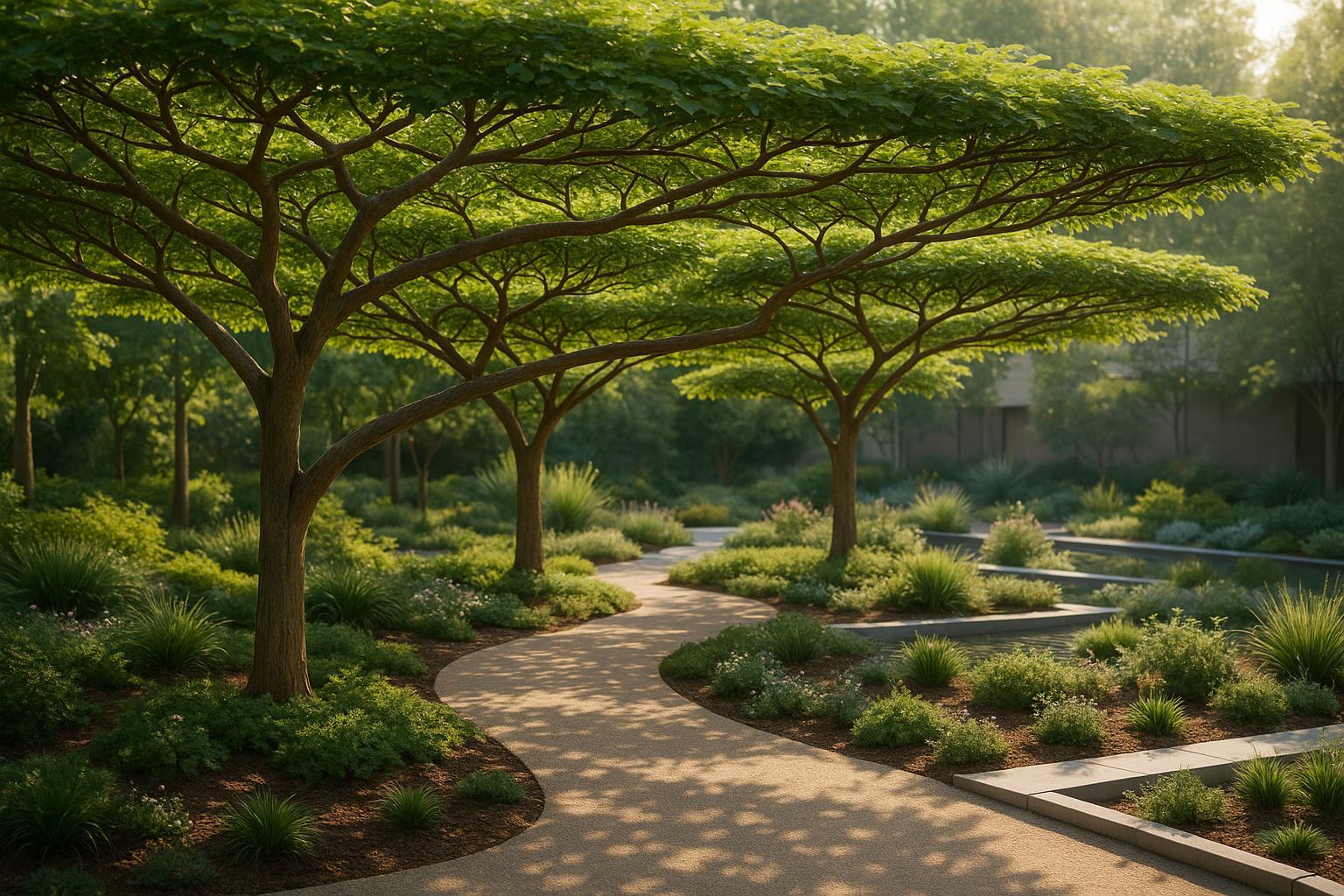
How AI Improves Microclimate Through Canopy Design
Explore how AI enhances garden canopy design to optimize microclimates, improve temperature control, and conserve water effectively.
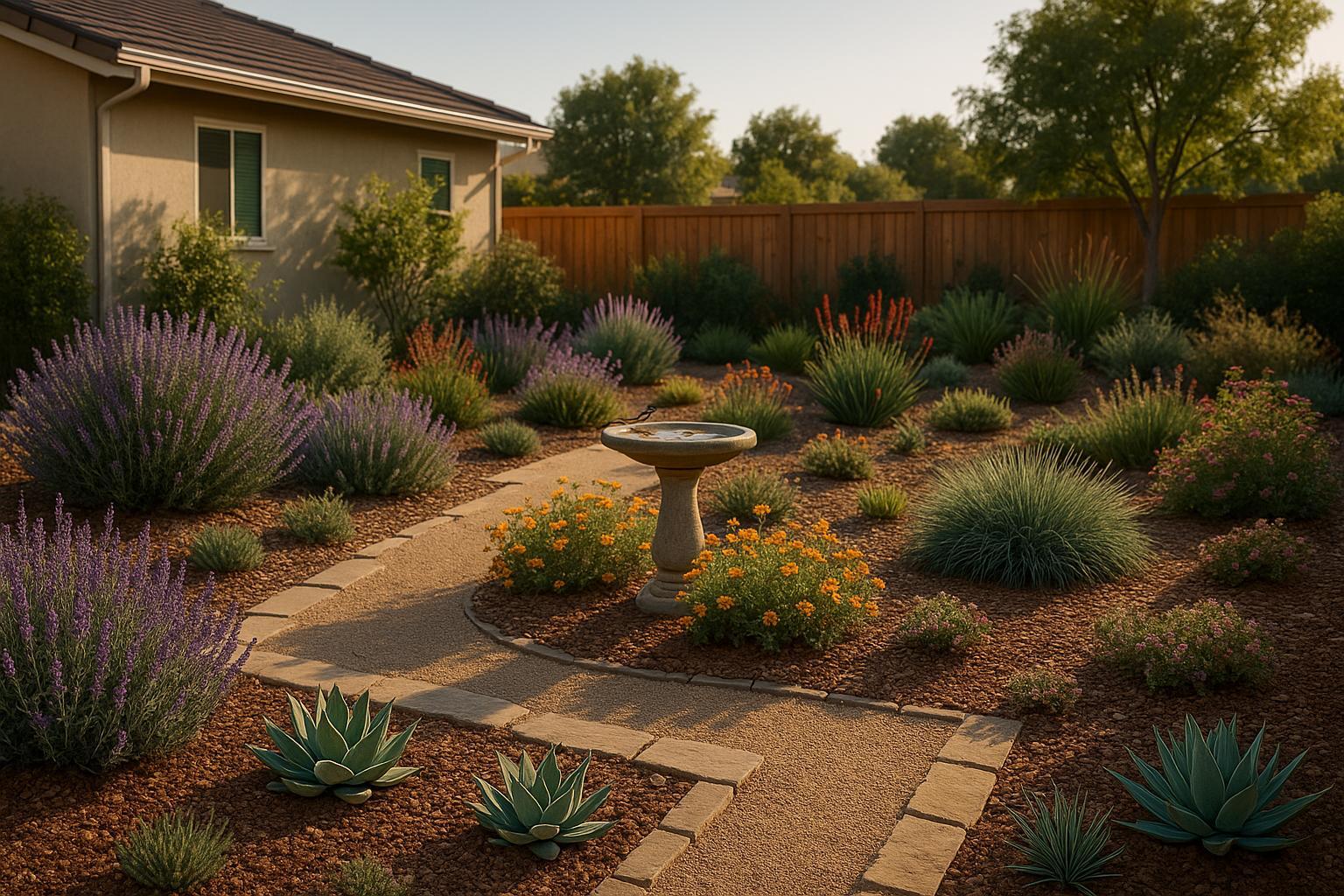
5 Steps to Create a Low-Water Garden
Transform your outdoor space with a low-water garden using simple steps that save money, reduce maintenance, and support ecosystems.

How AI Predicts Soil Nutrient Depletion
AI technology predicts soil nutrient depletion, optimizing fertilization and enhancing plant health while saving time and resources.
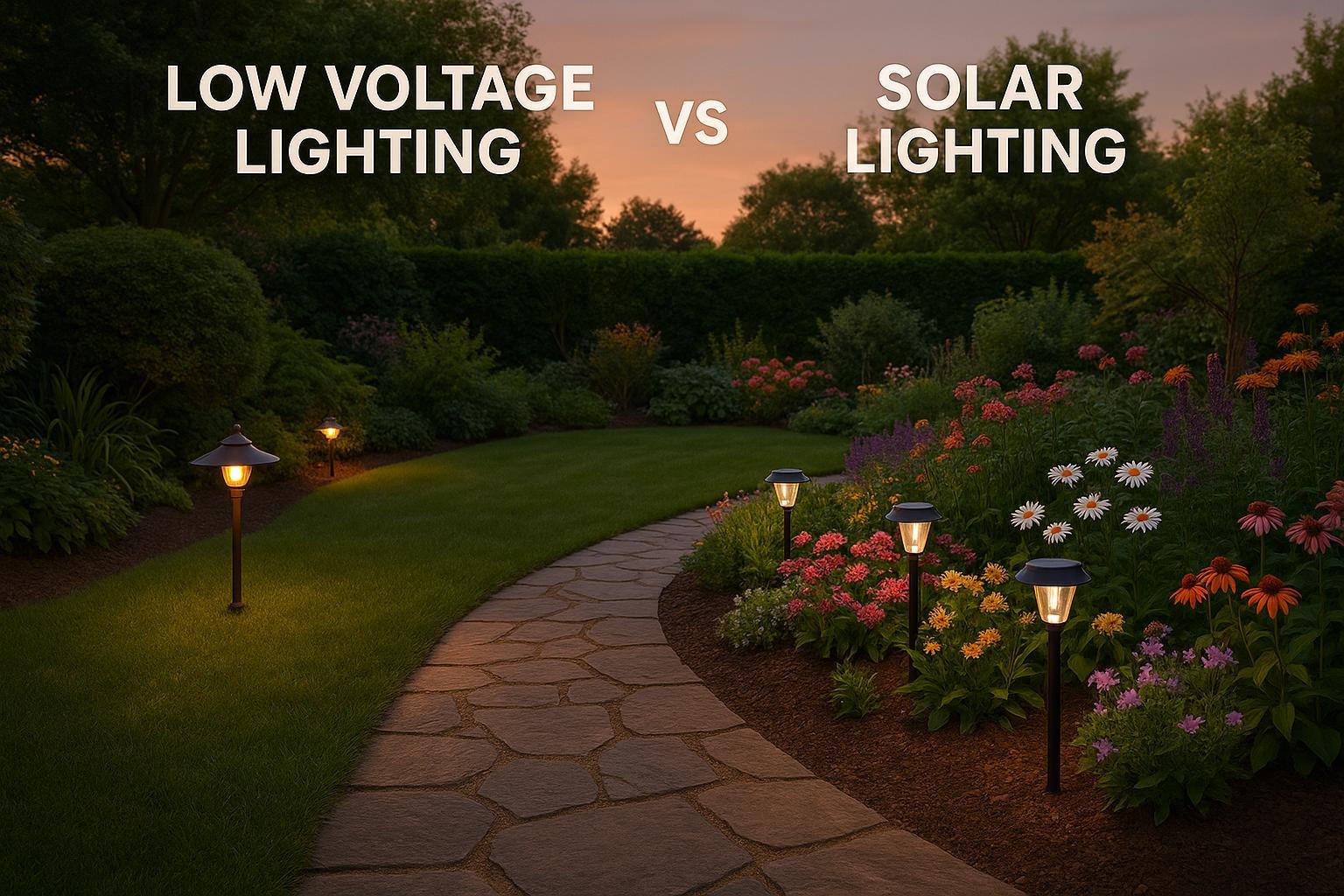
Low Voltage Lighting vs. Solar Lighting
Explore the pros and cons of low voltage versus solar lighting for your garden, including costs, performance, and best uses.
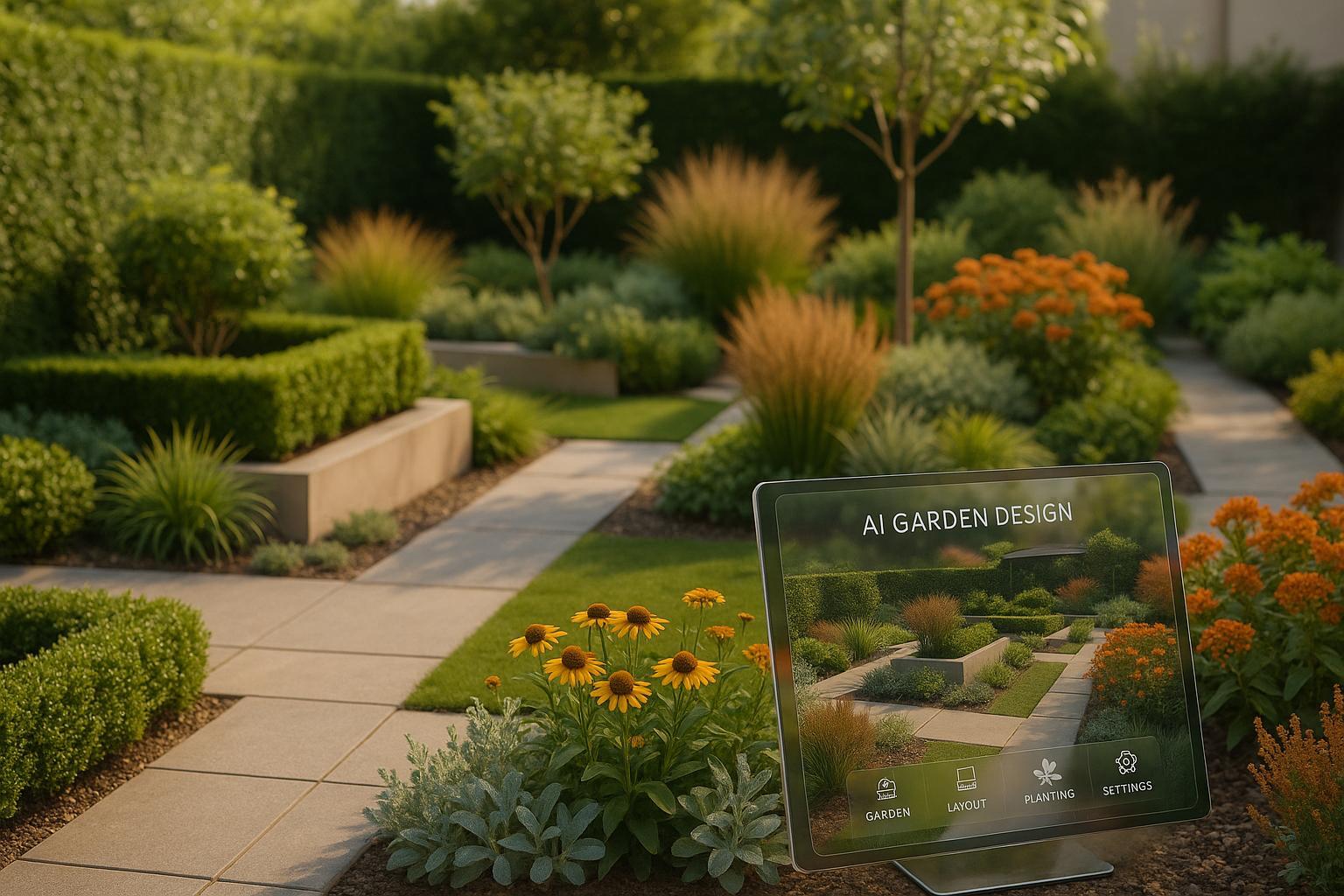
How AI Adjusts Garden Styles Instantly
Unlock the power of AI in garden design with instant customization, eco-friendly plant suggestions, and professional-quality layouts tailored to your space.